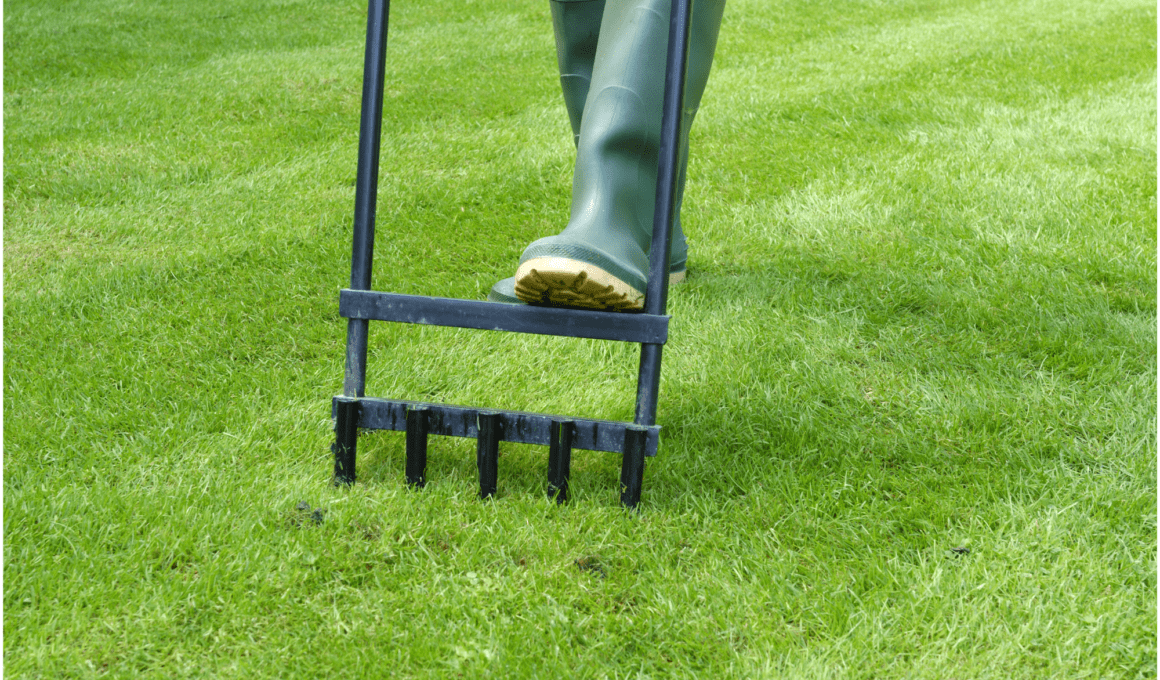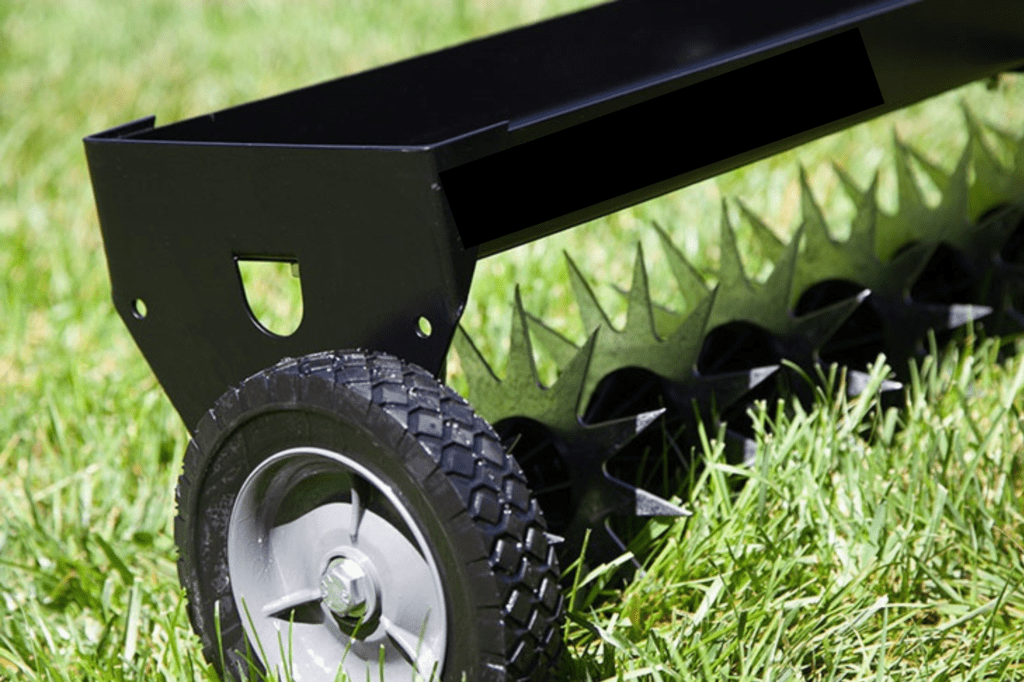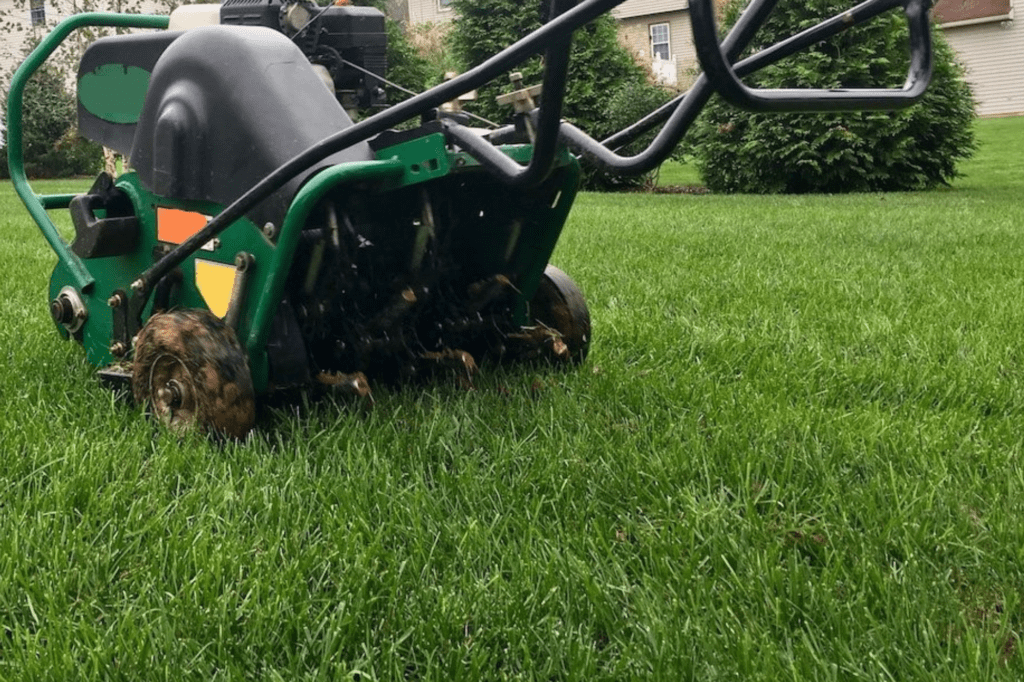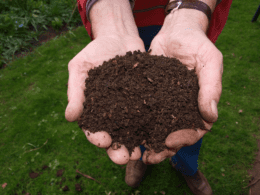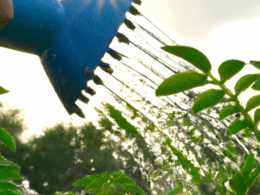Are you looking to achieve a lush and vibrant lawn?
One important step in achieving a healthy lawn is proper aeration. By aerating your lawn, you can improve its overall health and appearance. This article will guide you through the process of aerating your lawn, ensuring safety and effectiveness.
Lawn aeration involves creating small holes in the soil to allow air, water, and nutrients to reach the grassroots. This process helps to alleviate soil compaction and promote healthy root growth. By aerating your lawn, you can prevent issues such as water runoff, weeds, and disease.
To aerate your lawn safely, it is crucial to choose the right time and method. You will learn how to prepare your lawn, select the appropriate aeration method, and properly use a core aerator. Additionally, you will discover how to address any compacted areas and follow up with proper lawn care.
By following these guidelines, you can achieve a healthier and more vibrant lawn that will be the envy of your neighborhood.
So, let’s get started and transform your lawn into a green oasis!
Quick Summary
- Aeration is essential for achieving a lush and vibrant lawn.
- Lawn aeration helps alleviate soil compaction and promotes healthy root growth.
- Spring or fall are the best times to aerate the lawn.
- Proper lawn care includes overseeding, proper watering techniques, and addressing compacted areas.
Understand the Benefits of Lawn Aeration
Aerating your lawn is an essential step in maintaining its health and beauty, ensuring that it receives the necessary nutrients and oxygen to thrive. Understanding the benefits and importance of lawn aeration will help you make informed decisions about the care and maintenance of your lawn.
One of the key benefits of lawn aeration is improved nutrient absorption. When your lawn becomes compacted, the roots struggle to access the essential nutrients they need to grow and stay healthy. By aerating your lawn, you create small holes in the soil, allowing nutrients to penetrate deeper and reach the roots more effectively. This results in stronger and more vibrant grass.
Another important benefit of lawn aeration is enhanced oxygen circulation. Compacted soil prevents oxygen from reaching the roots, suffocating them and inhibiting their growth. By aerating your lawn, you break up the compacted soil, allowing oxygen to flow freely to the roots. This promotes a healthier root system, leading to a lusher and greener lawn.
In addition, lawn aeration helps improve water absorption. Compacted soil often leads to water runoff, preventing your lawn from receiving proper hydration. Aeration helps create channels for water to penetrate the soil, reducing runoff and allowing water to reach the roots, keeping your lawn adequately hydrated.
Understanding the benefits and importance of lawn aeration is crucial for maintaining a healthy and beautiful lawn. By aerating regularly, you provide your lawn with the necessary nutrients, oxygen, and water it needs to thrive. So, don’t overlook this essential step in lawn care and enjoy the rewards of a vibrant and lush lawn.
Determine the Best Time to Aerate Your Lawn
When is the ideal time to give your grass a breath of fresh air? Determining the best time to aerate your lawn is crucial for its overall health. By understanding the signs of lawn compaction and following the best lawn care practices, you can ensure that your grass receives the aeration it needs at the right time.
Here are some key things to consider:
- Spring or fall: These seasons are generally the best times to aerate your lawn. The soil is typically moist, making it easier for the aerator to penetrate the ground.
- Avoid extreme temperatures: Aerate your lawn when the weather is mild, avoiding periods of extreme heat or cold. This will help prevent stress to both your grass and yourself.
- Check for signs of compaction: If you notice water pooling on your lawn or see thatch buildup, it may be a sign of soil compaction. Aeration can help alleviate these issues.
- Safety first: Before aerating, make sure to remove any debris, mark any hidden sprinkler heads, and wear appropriate safety gear. This will protect both you and your lawn.
By following these guidelines, you can determine the best time to aerate your lawn and ensure that you’re practicing safe lawn care.
Prepare Your Lawn for Aeration
Before you begin the process of preparing your lawn for aeration, it’s important to ensure that you have all the necessary tools and equipment. This will make the task easier and more efficient. One of the main things you will need is aeration tools, which are designed to penetrate the compact soil and create small holes for air, water, and nutrients to reach the roots of your grass. There are different types of aeration tools available, including manual aerators and powered aerators. The choice will depend on the size of your lawn and your personal preferences.
To give you a better idea of the options available, here is a table that compares manual aerators and powered aerators:
| Manual Aerators | Powered Aerators |
|---|---|
| Requires physical effort | Requires less physical effort |
| Suitable for small lawns | Suitable for large lawns |
| Affordable | More expensive |
When using aeration tools, it’s important to prioritize safety. Make sure to wear protective gear such as gloves and goggles, and follow the manufacturer’s instructions carefully. It’s also a good idea to mark any obstacles in your lawn, such as sprinkler heads or underground utilities, to avoid damaging them during the aeration process. By taking these precautions, you can ensure a safe and successful lawn aeration experience.
Choose the Right Aeration Method
To achieve a healthy and vibrant yard, it’s crucial to select the aeration method that suits you best. When choosing the right aeration method for your lawn, consider the following options:
- Core Aeration: This method involves the use of a core aerator, which removes small plugs of soil from the lawn. It helps break up compacted soil and improves air circulation, water absorption, and nutrient uptake for your grass.
- Spike Aeration: Using a spiked aerator, this method involves creating holes in the soil by driving spikes into it. While it can provide temporary relief for compacted soil, it may not be as effective as core aeration in the long run.
- Liquid Aeration: This method involves applying a liquid solution that helps to loosen compacted soil. It is a less invasive option compared to mechanical aeration methods and can be an excellent choice for smaller lawns or areas with limited access.
When considering which aeration method to use, it’s important to prioritize safety. Ensure that you’re wearing appropriate protective gear, such as gloves and safety glasses, when operating aeration equipment. Additionally, carefully read and follow the manufacturer’s instructions to prevent any accidents or injury.
By selecting the right aeration method for your lawn maintenance, you can promote healthy growth, improve water absorption, and enhance the overall health of your yard.
Properly Use a Core Aerator
Using a core aerator is a simple and effective way to revitalize your yard and promote a lush, green landscape. To properly use a core aerator, there are a few important steps to follow.
First, make sure you have the right equipment and safety gear, including gloves and safety glasses.
Before starting the process, it’s essential to inspect the core aerator for any maintenance issues, such as loose or missing parts. Check that the tines or spikes are sharp and in good condition. If they’re not, replace or sharpen them before use.
Next, choose a day when the soil is moist but not overly wet. This will make it easier for the aerator to penetrate the ground.
Walk slowly and steadily, pushing the core aerator across your lawn in straight lines. Overlap each pass slightly to ensure complete coverage. If you encounter any obstacles, like rocks or tree roots, avoid them to prevent damage to the machine or yourself.
While using a core aerator is the preferred method for most homeowners, there are alternative aeration methods available. Spike aerators and liquid aerators can also be used, but they may not be as effective in relieving soil compaction.
By properly maintaining your core aerator and exploring different aeration options, you can keep your lawn healthy and thriving.
Address Any Compacted Areas
Tackle any compacted areas in your yard head-on by identifying problem spots and taking appropriate action. Repairing damage caused by compacted soil is essential for maintaining a healthy and vibrant lawn. Additionally, addressing these issues promptly can help prevent soil erosion.
Here are four steps to effectively address compacted areas:
- Inspect the Yard: Take a close look at your lawn and identify areas that appear compacted. These spots are usually hard, dry, and lack proper grass growth.
- Loosen the Soil: Use a garden fork or a core aerator to break up the compacted soil. Insert the fork into the ground and gently rock it back and forth to create small holes.
- Add Organic Matter: Spread a layer of compost or organic matter over the compacted areas. This will help improve soil structure and provide essential nutrients for your grass to thrive.
- Overseed and Water: After adding organic matter, overseed the compacted areas with grass seed, and water thoroughly. This will promote new growth and help fill in any bare spots.
By following these steps, you can repair the damage caused by compacted soil and prevent soil erosion. Remember to always prioritize safety and wear appropriate protective gear, such as gloves and sturdy shoes, when working in your yard.
Follow Up with Proper Lawn Care
Now that you have addressed any compacted areas in your lawn, it’s time to follow up with proper lawn care to ensure optimal results. One crucial step in this process is overseeding, which involves spreading grass seed evenly across your lawn. This will help fill in any bare patches and promote a lush, healthy lawn.
To ensure successful overseeding, it’s important to follow proper watering techniques. Watering your lawn deeply and infrequently is key. This encourages deep root growth and helps the new grass seed establish itself. Avoid frequent shallow watering, as this can lead to weak, shallow roots and a less resilient lawn.
To help you visualize the importance of proper watering, here is a table that highlights the benefits of deep watering compared to shallow watering:
| Deep Watering | Shallow Watering |
|---|---|
| Promotes deep root growth | Encourages shallow root development |
| Increases drought tolerance | Decreases drought tolerance |
| Enhances nutrient uptake | Limits nutrient absorption |
| Improves overall lawn health | Weakens lawn health |
| Provides better weed resistance | Increases weed susceptibility |
By following these proper lawn care techniques, including overseeding and proper watering, you will be well on your way to achieving a vibrant and resilient lawn. Remember, safety always comes first, so be sure to use caution when operating any lawn care equipment.
Enjoy a Healthier and More Vibrant Lawn
To transform your lawn into a flourishing oasis, embrace these simple steps for a healthier and more vibrant outdoor space. Aeration is the key to achieving this goal. By allowing air, water, and nutrients to penetrate the soil, you can enjoy a multitude of benefits.
First and foremost, aeration helps reduce soil compaction, which is crucial for root growth. It also improves water absorption, preventing runoff and reducing the risk of flooding. Additionally, aeration promotes the breakdown of thatch, the layer of dead grass and debris that can suffocate your lawn. This process allows for better airflow and encourages healthy microbial activity in the soil.
To carry out aeration effectively, you’ll need the right tools. One option is a manual aerator, which is perfect for small lawns. It consists of hollow metal tubes that you push into the ground, creating small holes. For larger lawns, a power aerator is recommended. This machine uses rotating tines to remove small plugs of soil, allowing for better airflow. Regardless of the tool you choose, make sure to wear appropriate safety gear, such as gloves and goggles, to protect yourself from any potential hazards.
By aerating your lawn, you can enjoy a healthier and more vibrant outdoor space. So take the time to invest in the right tools and follow these simple steps. Your lawn will thank you!
Frequently Asked Questions
Can I aerate my lawn during any season of the year?
The best time to aerate your lawn is during the growing season, either in the spring or fall. It has many benefits like improving soil drainage, reducing soil compaction, and promoting root growth.
How often should I aerate my lawn?
To ensure a healthy lawn, aerate it once or twice a year. Aeration helps to improve water and nutrient absorption, reduces soil compaction, and encourages root growth. The best time to aerate is during the growing season.
Do I need to water my lawn before aerating it?
Yes, it’s important to water your lawn before aerating it. Adequate soil moisture helps the aerator penetrate the ground easily without causing damage to your lawn. This ensures a safe and effective aeration process.
Can I use a spike aerator instead of a core aerator?
Yes, you can use a spike aerator as an alternative to a core aerator. However, it’s important to know that core aeration has more benefits for your lawn, like reducing soil compaction and promoting healthy root growth.
Will aerating my lawn help with weed control?
Aerating your lawn has several benefits for its health, including weed control. By allowing air, water, and nutrients to reach the roots, aerating helps your grass grow thick and strong. The best time to aerate for optimal results is in the early fall or spring.
Conclusion
So there you have it! You now know how to aerate your lawn and enjoy the benefits of a healthier and more vibrant yard.
Remember to determine the best time to aerate, prepare your lawn, choose the right method, and properly use a core aerator. Don’t forget to address any compacted areas and follow up with proper lawn care.
By following these steps, you’ll be on your way to a beautiful lawn that’ll make your neighbors green with envy!





